Women’s outdoor groups provide safe and nurturing spaces for many women to make connections and push their limits.
As awareness about trans and non-binary issues rises, some women are starting to question how to make their groups more welcoming to trans people. These women realize how lucky they are to have safe spaces and they want to extend the benefit of their communities to their trans, non-binary and Two-Spirit siblings.
This blog post is starting point for that journey. Making women’s groups more trans-inclusive can be complicated. There is no single correct way to do things. To shed light on some of these different perspectives, I talked to 42 trans, non-binary and Two-Spirit people to hear their perspectives.
Let’s start with the basics
Transgender people do not identify with the gender they were assigned at birth.
There are a lot of ways to be transgender. Some people transition from one binary gender identity to another. Some people are non-binary, which means their gender doesn’t fit into the categories of man or woman. Two-Spirit is a term used by Indigenous people to describe a range of gender identities and sexual orientations.
There are a lot more words that trans people use and language changes over time. You don’t need to memorize everything. You can always look up words to learn more. The most important thing is to use the language people ask you to use when referring to them.
You cannot tell if someone is transgender or non-binary by looking at them. Some people will tell you that they are trans and some will not. You’ve probably met many trans people, even if you did not know it at the time.
Most people are cisgender. This means people thought you were a boy or a girl when you were born, and it turns out this was right! The short version of cisgender is “cis,” which means same.
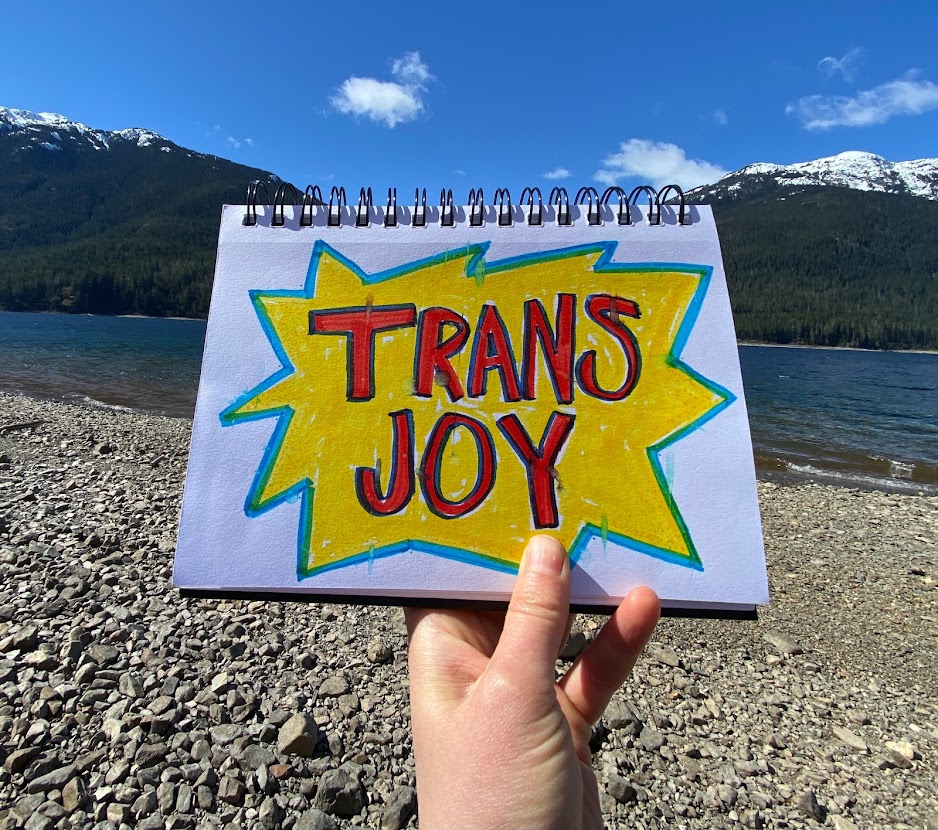
Trans women
The best place to start is making sure your women’s group is a welcoming place for trans women.
You might think you don’t have much to do here, since trans women are women! Simple as that. But to be truly welcoming, you need to do more.
Sarah is queer trans woman who loves mountain biking and backcountry skiing. She says, “I am wary of women specific groups or trips unless they are explicitly trans and nb [non-binary] friendly, I have felt before awkward in these spaces, like people would prefer I wasn’t there and that I am only included because it would be offensive not to allow me to partake.
As I write this, some places in the United States are very busy making laws to ban trans girls from school sports. Just a few years ago, a very prominent women’s organization decided it would rather stop running rather than include trans women. Even if you do not agree with these things, trans women have no way of knowing that about you.
What are you going to do to actually make your group inclusive for trans women?
My previous blog post on how to make your outdoor group more trans inclusive has some tips to get you started.
The payoff is huge for the women who are able to participate in your group.
Brie is a white woman climber. She writes, “Outdoorsy women are my peeps. I feel most safe and most free in women’s spaces. I’ve made so many deep and meaningful connections and I also have a voice to advocate for more trans inclusion. After being stuck in men’s spaces and excluded from women’s spaces my whole life it’s also very liberating and affirming.”
Erin (pictured below) is gender diverse climber, mountaineer and skier. They like participating in women’s and queer groups because it “offers validation to my identity.” She feels safer when organizations state that they “welcome gender diverse members, specifically if it’s a gender specific trip. Inclusion is melding policy to accommodate the human not asking the human to meld into the policy.”

A note on womxn
Some people use alternative spellings of women to show they are trans-inclusive, such as womxn. However, a lot of people do not like womxn. There is no generally understood agreement on what it means.
Some people feel that this puts putting trans women in a separate and lesser category of womxn. It reminds some people of “womyn” which is often used by people who do not think trans women are women. This is not usually the intent, but it often how it is received.
I’ve seen some groups use femme instead of women. This can also be confusing. For example, some women are quite masculine. And some men identify as femme!
I recommend using simple, descriptive language that widely used in your community. Something as simple as: “Our group welcomes all women, including cis and trans women.”
The language you want to use is different depending on where you are in the world. Figuring this out what fits for your group is part of the process. And the relationships you build towards as you are working on inclusion will speak louder than any text on your website.
Are you finding this resource helpful?
This blog takes several hundred dollars per year to run, not including my time. To help keep this resource sustainable, consider donating. No amount is too small.
Non-binary people
Non-binary people generally do not identify as a man or a woman. This identity is generally considered under the trans umbrella. However, not all non-binary people would agree with what I just said. There is a lot of diversity in this one identity!
Some people think all non-binary people are people who were assigned female at birth and dress a bit androgynously. If you take one thing away from this article, it would be to stop thinking this. Non-binary people are not all “tomboys.”
There is no one way to look non-binary.
Some of us have beards. Some wear makeup. (Some do both at the same time!) We are old, young, fat, skinny, tall, short, brown, black, white. Some of us have deep voices and some high.
Some of us were assigned female at birth and others male. Others are intersex.
Some of us choose to take hormones or have gender affirming surgery. Some do not. And there is no guarantee that our appearance will stay the same over time.
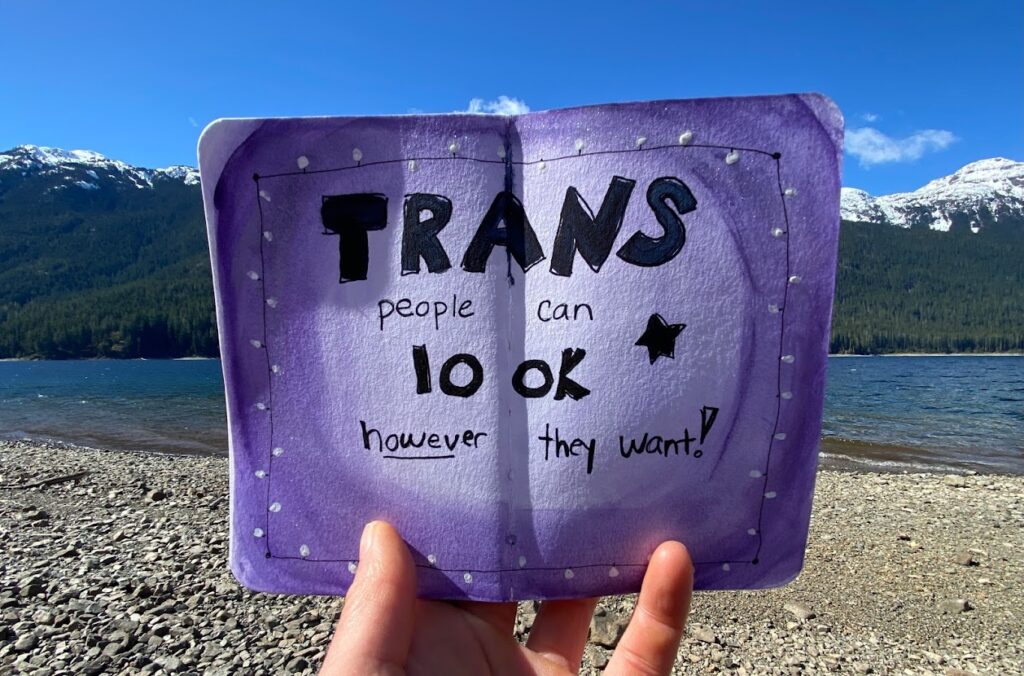
Welcoming regardless of appearance
If you want to include non-binary people, you need to do the work in your organization ahead of time so that a masculine-presenting person or androgynous-presenting person is received with the same warm, comfort and ease as a feminine person.
Dizzy is a trans, non-binary genderqueer person. They love foraging, swimming in lakes and going to beaches. They write, “I am non binary and sometimes present femme and sometime present masculine. I have had some adverse reactions in women’s groups depending on how I present.”
To be inclusive of non-binary people, you will need to stop using gendered language to describe the entire group. For example, you cannot get everyone’s attention at a meetup by saying “Hey ladies!” And unless you actually know the gender identity of everyone in a photo, you cannot call tag pictures of them on Instagram with “#outdoorwomen. You will also need to normalize sharing and using peoples pronouns, including “they/them.”
This goes way beyond the text on your website or Instagram account. Does everyone in your group know what non-binary means? Are they on board with welcoming ALL non-binary people, not just those assigned female at birth? Have you done some basic things to make your group welcoming for trans people?
You cannot tell by looking at someone if they are non-binary
Treating non-binary people as if they are similar to women can unintentionally hurt people you hoped to include.
Flo is a white non-binary queer person who loves bike packing, car camping. Flo writes, “I don’t look androgynous, have not medically transitioned and could pass as a cis woman. Sometimes I feel like AFAB [assigned female at birth] non-binary people are assumed to be ‘women-lite’ and that makes me uncomfortable. Participating in women groups can reinforce my dysphoria.” Gender dysphoria is the unease you feel about the mismatch between the gender you were assigned and the gender you are.
I was involved in a mentorship program this summer called Mountain Mentors. The group is mostly for women, but is also inclusive of other gender identities. Their website reads: “Our programming is offered to marginalized genders including women, women-identifying individuals, and non-binary and gender non-conforming people who are comfortable in a space that centers the experiences of women in the outdoors. We recognize and acknowledge the intersection of race and gender identities and it is our hope that we can provide programming that is inclusive and accessible.”
I really appreciate how the text clearly and honestly describes whose experiences are being centered (women). And the appropriate and respectful language they are using around other identities makes me feel like they’ve done some research and built some relationships with diverse communities. The work they are doing inspired me to take a leap and join them this year as a mentor.
A note on “female-identifying non-binary”
I have seen some groups that say they welcome “female-identifying non-binary” people or “non-binary women”. This always makes me pause. I am never sure if the person who wrote this knows what it means.
Some non-binary people do also identify as women. It usually describes people who feel like they are non-binary but also identify strongly with being raised as women, belonging in women’s communities, and/or perhaps identifying as lesbian. While this identity is completely valid, it is not common.
Sometimes I wonder if groups are trying to signal that they just want to welcome non-binary people assigned female at birth. Or non-binary people they think look like women? I am just really not sure. Both of these interpretations are harmful and show a deep lack of understanding of what non-binary means.
There is no word for non-binary people who were assigned female at birth. And there is no word for non-binary people who “look like women.”
Generally speaking if you are welcoming non-binary people, you should be prepared to welcome all of us not matter what is in our pants or what we look like. And if you don’t want to do that, it is ok to have a space just for women!
Trans men
Most trans men who responded to my survey said they had no interest in a women’s group because they are not women! And they fully supported it existing for those who wanted that space.
Miles is “transmasc queer mixed settler.” He loves fishing, quadding and foraging. He writes, “I was in the girl guide organization for 10 years and it was really important to have that space, even though I identify as male/transmasc now I still think it was an extremely valuable experience to have a specific female identified group when I identified as female.”
So really, that’s it. Trans men are not women. They don’t want to be in your women’s group.
That is… unless you perhaps don’t actually want to have a women’s group.
Considering including trans men
Most trans men were assigned female at birth. They may have grown up as girls, with all its challenges and joys. They also might have faced the similar gender-based discrimination and harassment as woman have. Their close relationships may have been with women for most of their lives. As a result, many trans men enjoy being in majority female spaces.
Jordan is queer and loves camping, hiking and kayaking. He says, “I’m a trans man but my friendships and socialization is very much centred around women, I feel more comfortable in female spaces, restrooms and change rooms aside. My spirit is more enby [non-binary], really, but my gender expression is male.”
Jack is a Scottish trans man (pictured below). He is an ex ITF Taekwondo athlete, cyclist and now climber. He echos similar feelings to Jordan. “Many of us wouldn’t be wanting to be in women’s groups as that’s invalidating, but many of us better relate growing up with misogyny nonsense and how that’s affected us in all walks of life as individuals, e.g. our confidence levels, or willingness to speak up etc.”
So there could be room for trans men in a group that was mostly women. You just don’t call it a women’s group anymore! Perhaps it’s a group for people who were women in the past, are women now or may be women in the future.
There is no pressure to do this. Groups for just women (that include trans women) are valid.
And unless you have a lot of trans folks involved in your group, you may or may not be in a place to respectfully swing this. This is why spaces just for trans and non-binary people can be so important and validating. But that goes beyond the scope of this post!
What’s next?
If this is new to you and feels like a lot, don’t worry. Your best bet is just to start somewhere. Keep reading, learning, listening, asking respectful questions and building relationships with trans and non-binary people.
You are going to mess up. That is unavoidable. Stay curious and keep going.
And remember these key points:
- Trans women are women. Pro-actively including them is the first thing you should do.
- Non-binary people are not women. Don’t just just add “woman and non-binary people” to your Instagram description and call it a day. Including non-binary people requires building relationships, educating yourself and reimaging what your group is. It involves making your group inclusive for people who may not “look like” women.
- Trans men are not women. Trans men do not want to be included in a women’s group. But if you’re reimagining your group as one for all marginalized genders, you may be able to invite them in!
Please share this post!
This blog takes several hundred dollars per year to run, not including my time. To help keep this resource sustainable, consider donating. No amount is too small.
Discover more from We Belong Outside
Subscribe to get the latest posts sent to your email.

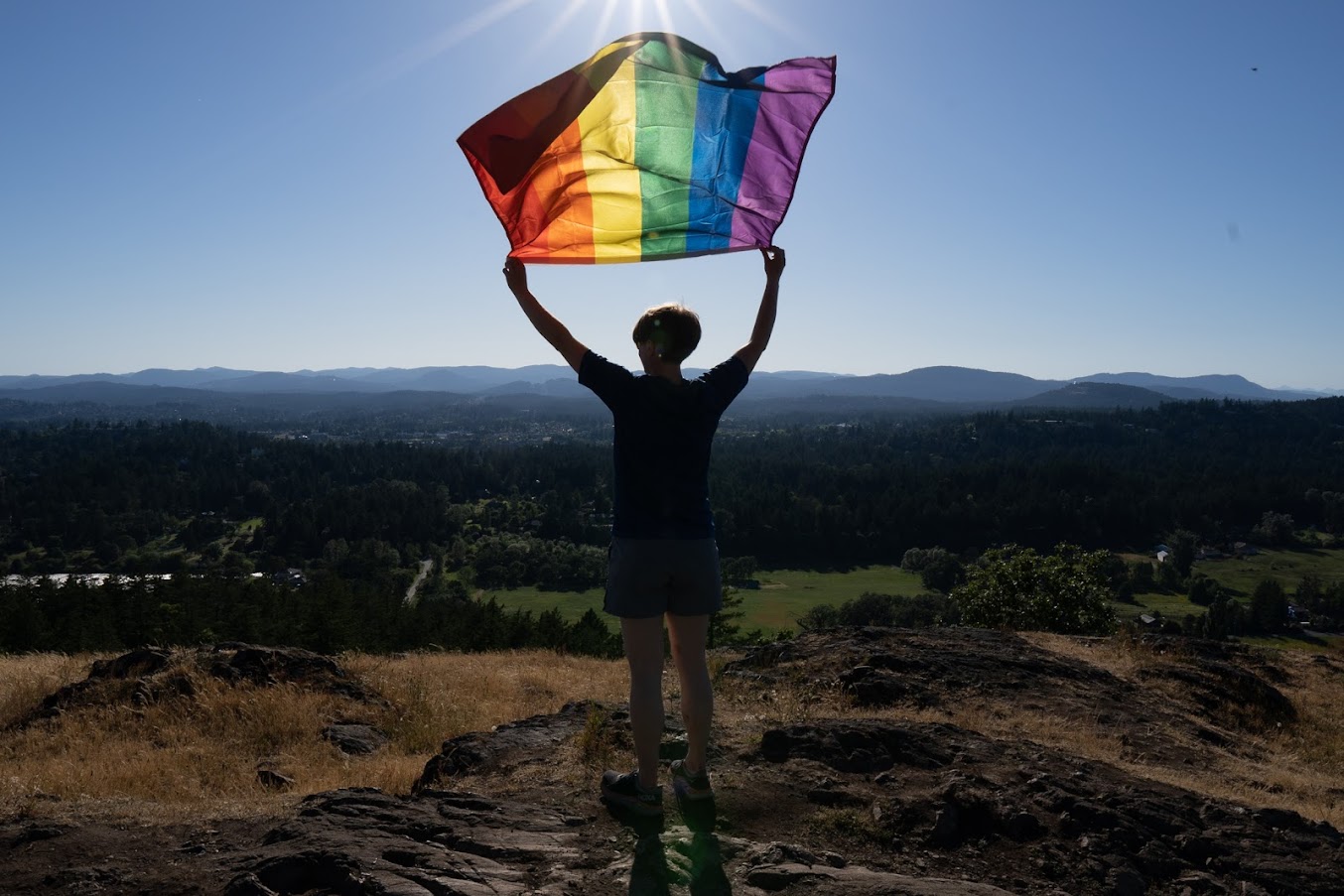
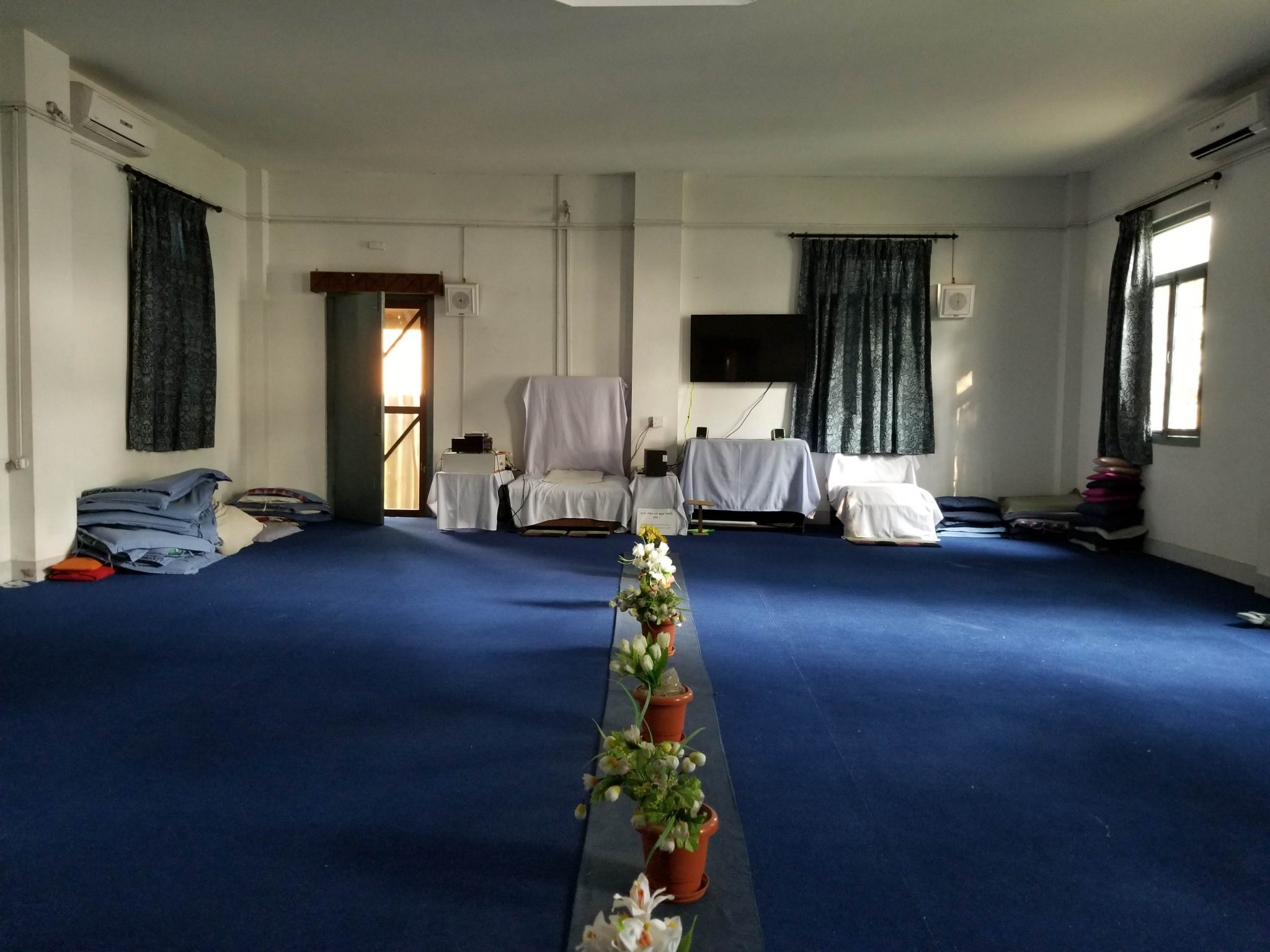
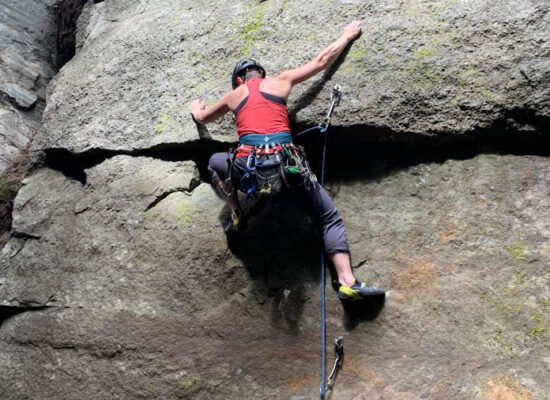
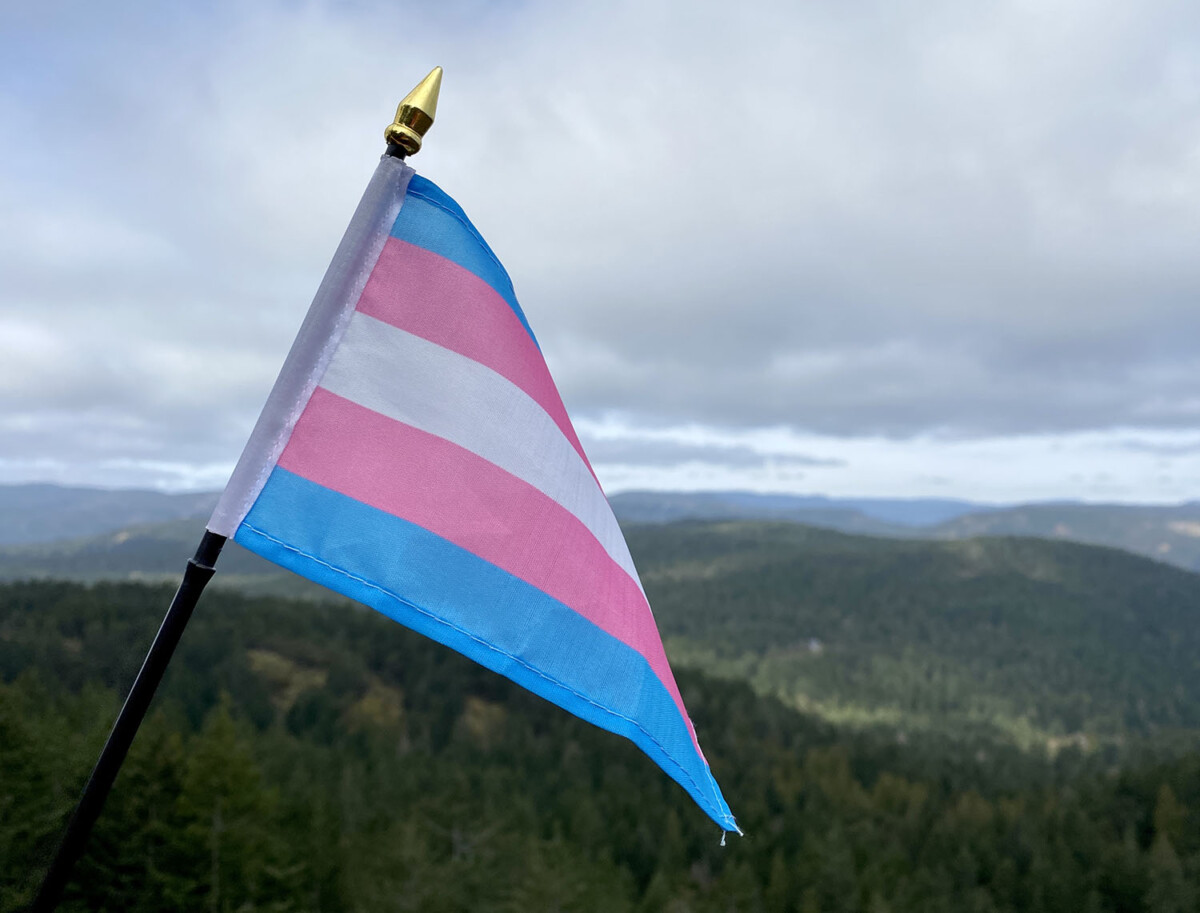
10 thoughts on “How to include trans and non-binary people in your women’s group”
Jes, so grateful to you and to all those whose knowledges, experiences, and perspectives are captured in this (and others you have shared) post. For learning, for understanding, for awareness-building, and so much more – your writing is invaluable!
👏🏻👏🏻👏🏻 I’d just been thinking of you! Nice work friend!
Great article. Appreciate the acknowledgment of trans men’s existence in this post, as I feel they are overwhelmingly ignored in discussions about trans-inclusive spaces. I echo the sentiments of those who said while they wouldn’t want to be in a “women’s group”, there are rarely groups where we can be comfortable and fit in.
Thanks for the insightful, easy-to-understand article. You’ve made it fun to read and easy to digest.
This is a great article and I am still learning how to best support my questioning teen. Separately, would saying “feminine aligned” be inclusive of all persons who identify as having feminine energy? Is there a better word or phrase to use?
Your best bet is asking the person you’re talking about what language they want to use! Some common phrases feminine trans and non-binary people used are woman, trans feminine, trans femme, femme. I have never heard “feminine aligned” but people can use whatever language they like to refer to their own identity. I think it’s important to not that being a woman and being feminine are not the same thing. There are feminine gay men and butch women, for example. So always best to ask!
This post has been instrumental in my understanding of how to respectfully transition our historically women’s choir to a more inclusive space. Thank you for gathering experiences from a variety of people and honoring the nuances that come along with this important work!
Want to stand up for people like me. Join the fight!
725-230-0230
Thank you I’m trying to organize a women’s event and include anyone who wants to come. I decided to say people of all genders are welcome to this event to celebrate sisterhood. I don’t know if that’s right but it’s more welcoming than a women’s event.
It’s a step in the right direction! I’m non-binary and I have a sister. We used to be sisters, now she is my sister and I am her sibling. If the goal is for people of all genders to celebrate women and their sisterhood, that language could work. If the goal is for people of all genders to celebrate their own bonds, I’d probably expand it to “sister- and siblinghood.” As an idea.